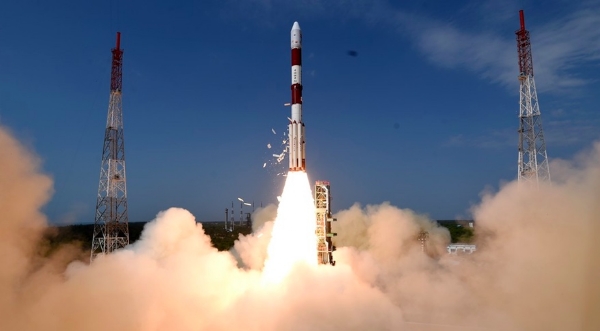India in Space
Why we need space missions? What is the importance of these missions? What benefit does common man receive? What are future space missions planned by ISRO? Lets get some glimpses of it.
Total Views |
In the last week, two pieces of news about space were in the newspaper. One was about the Mangalyan and another was about the National Aeronautics and Space Administration’s (NASA) space mission. These space missions usually raise questions about the utility of expenses on space missions. These questions may be simple and logical for many, but there are some other factors involved in the space mission. Let’s take a glimpse at the benefits of space missions, and also try to explore India’s presence in space.

Space missions in the news
As I have written in the beginning there were two news pieces about two different space missions, that were published in recent days. One of them was regarding the Mars mission by the Indian Space Research Organisation’s (ISRO) Mangalyan mission.
Also Read: India’s Grains Story
NASA launched the Double Asteroid Redirection Test (DART) mission, some months ago. It was a part of the planetary defence strategy. The idea behind the mission was to redirect any celestial body that would threaten the existence of the earth. To execute this, NASA conducted a mission where NASA launched a rocket that would travel to a decided asteroid. The target was a small asteroid with 530 feet in diameter which revolves around a bigger body 2,560 feet in diameter asteroid. This system together was not threatening the earth. The mission was conducted to check the ability to divert the asteroid from its designated path and save the planet if required.
Another piece of news from space was about Mangalyan. India launched Mangalyan on November 5, 2013, and it was established in Martian orbit on September 24, 2014. On October 3, 2022, ISRO officially declared the loss of communication with the Martian mission and ended the mission.
Similarly, one of the most significant happenings in space was the launching of the James Webb telescope! This project started in 1996 and after several stages, it was launched last year on December 25, 2021, with European Space Agency’s Ariane 5 rocket. The objective of the telescope was to reveal the secrets of deep space and to capture light from stars far from earth.
Why space missions?
Many people think or imagine that space mission is a waste of money because these missions require a large amount of money to be invested. Also, a small part can cause a failure or destruction of the rocket and precious payload. Even though the common man doesn’t get benefitted directly from space technology, it is not true.
Also Read: Forest Cover in India: Some facts
Space research can be called as apex manifestation of many streams of science. A rocket launch is just the tip of the iceberg. When several science streams like telecommunications, material science, chemistry, physics, etc. come together. Mastery in nearly each of these fields is required to launch a rocket. Therefore, it demonstrates the excellency of the country overall in the science sector. Advancement in all these sectors leads to the evolution of technology, which can be implemented in daily life. There are several day-to-day equipments which is evolved from space technology. There are several day-to-day gadgets which are evolved from space technology. Some instruments like camera sensors, GPS, and also some household gadgets like vacuum cleaners also evolved from technology used by astronauts.
Apart from these points, science missions are necessary for a country to be self-dependent in sectors like telecommunications, defence, etc. Today navigation and internet connectivity has improved thanks to a number of satellite network. Along with GPS and navigation, these satellites are used for weather forecasts and for a number of research. Weather forecast is essential for the primary sector such as farming, and fishing. Improvement in technology also helps to understand the location of mines and natural resources.
Indian Space Missions
India is one of the leading nations in the space sector. In the last few years, ISRO has had some great achievements like Chandrayan 1, Mangalyan, etc. In near future, ISRO is looking for taking the next step in the space sector. Let’s have a look at some missions ISRO is looking at.
- X-ray Polarimeter Satellite- ISRO is planning for a space observatory to study the polarisation of cosmic X-rays. This mission is designed to study the universe, including pulsars, black hole X-ray binaries, etc.
- Aditya– ISRO is planning a solar mission to study the sun. In mission Aditya, an orbiter will observe the solar corona.
- Gaganyan- For a long time, ISRO has been planning to send an astronaut into space. It is indeed a mammoth task. Either 2023 or 2024 can mark a year when India sends its own astronaut from Shriharikota and not from Baikanur.
These were just glimpses of future planned missions. Along with these, Chandrayan 2 and Mangalyan 2 are also in the queue. As we read before, every space mission indicates improvisation in technology. This improvement later percolates in our day-to-day gadgets making our life easy. So now we can change our attitude towards space missions.


